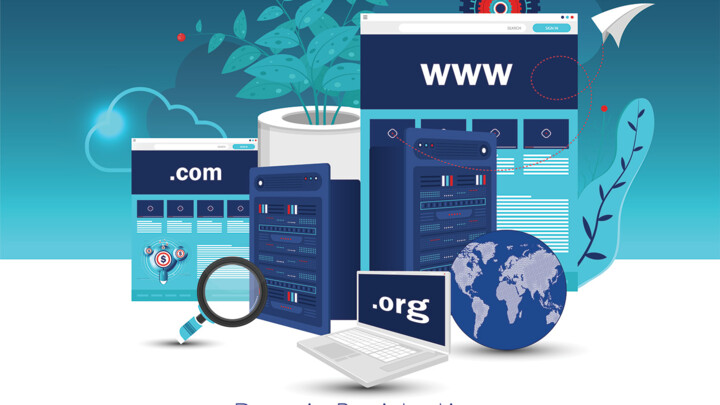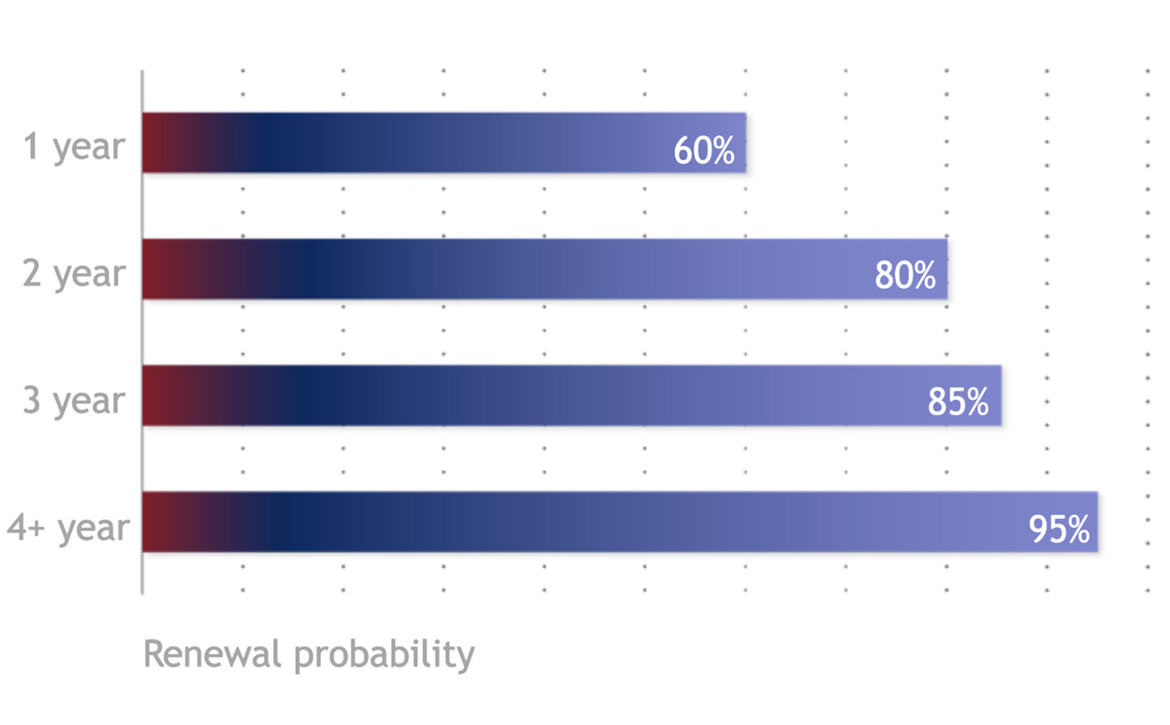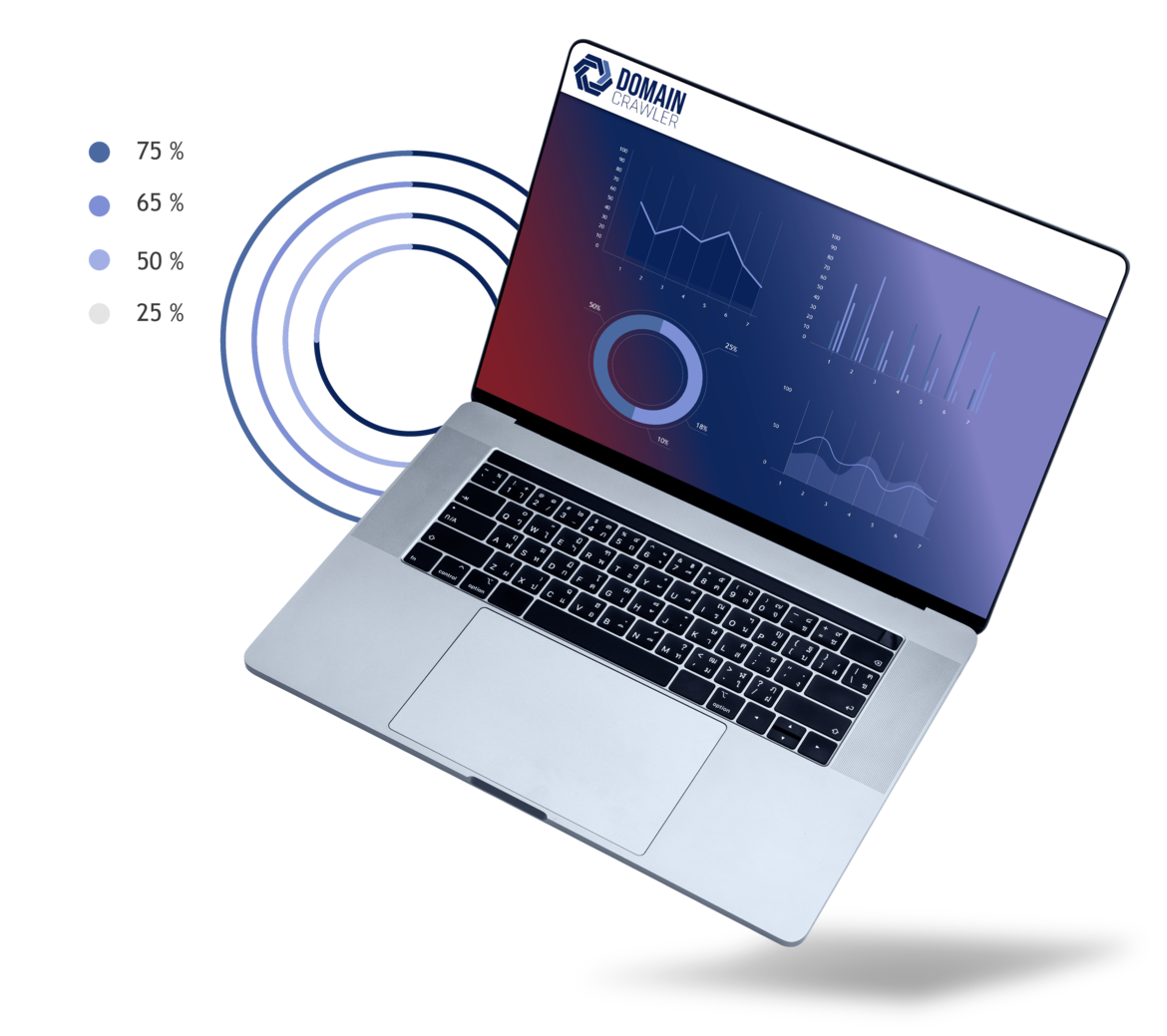Developing Domain Name Renewal Rates for Trust & Future Success
Danny Aerts & Rickard Vikstrom from DomainCrawler, on why models for the prediction of domain name renewal rates are key for the industry in assessing trust.

© ThinkNeo| istockphoto.com
One of the key issues for the domain registration business is how to accurately predict year-on-year how many customers will renew their domain name services. It’s fairly common that a registry in the first year has around a 60 percent renewal rate and, following the first year, that increases to around 80 and 85 percent on the total amount of domain names. But how can we understand better why this is so, how can this be more accurately predicted, and what can be done to help maximize these opportunities?
The important first year
The important thing for a registry is to survive the first year’s renewal. From the first year onward, the chances of the next renewal increases significantly and, after that, the domain name will most likely stay for a long period. For domains under management with a renewal rate of about 80 to 85 percent, which is at least typical for the older registries, this is a good benchmark.

To predict renewals accurately, it’s necessary to focus on months 6 to 11 of the first renewal period because that’s where the major churns exist, when a business decides if they want to keep the domain name or not. This depends of course on the renewal period (i.e. one year or longer), but it’s the upcoming renewal moment that is important, and for one year, that’s months 6-11.
Interestingly enough, the overall renewal rate that is higher than 85 percent might not be a good sign. There might be a problem because, if the renewal rate is too high, this could mean the business is not growing. Renewal rates which are generally high means there are only older domain names in the portfolio and not enough new sales are being generated. Even if new sales lead to lower renewal rates for the first year, it’s still necessary to maintain a balance, so that domains under management are growing. One of the most important things is not to stop selling, not to forget to make sure that there are new fresh accounts coming into the zone, and to at least survive the first year.
Predict the likelihood of renewals
When trying to analyze the likelihood of a renewal, a fairly accurate number can be obtained using historical data from the registrar who is selling the domains – for example, analysis of how a registrar usually performs during certain campaigns. If campaigns and registrars are tracked correctly, it’s possible to know exactly the number of sales achieved depending on the campaign and then anticipate what percentage of these will be renewed in the future.
It’s also possible to calculate the lifetime value of a domain that comes through certain registrars, enabling rebates to be tailored accordingly, and thus further enhancing the likelihood of renewal. For registrars that normally perform at lower levels, it’s possible to set performance targets and incentives and measure that effect and adjust accordingly. Predicting future activity based on historical data of registrars is fairly easy to do and can give a pretty clear picture of what is probably going to happen. Furthermore, depending on how much information is obtained on customers, it’s also possible to see connected services and the type of usage of the domain, which can further enhance the modeling process.
Collating and analyzing domain data
To further analyze a domain’s activity, it’s necessary to collect more data and then monitor on a daily basis. Some domain-based data is readily available, but DNS, web, and link data connected to a domain requires further investigation. To properly understand a domain, it’s necessary to spend time on investigations and then keep track of this activity every day.
A domain could be analyzed using a points-based scoring system, for example, based on some of the most important indicators of content and registration. For example, what is the content of the site, how is the site being used, is it e-commerce, are there other connected sites, links, is there an email address connected? All these factors increase the likelihood of a site remaining in business for the longer term.

For registrations, let’s say a customer has a portfolio of domain names, which is a very important indicator of longevity. If there’s a neighboring domain match, for example in Sweden, there might be a registry for both .se and .nu domains. The latter is very strong in this country and, if both domain names exist, then it’s highly likely a defensive registration has been performed, probably because a business is already thinking to keep domain names for the long term.

For registrations, let’s say a customer has a portfolio of domain names, which is a very important indicator of longevity. If there’s a neighboring domain match, for example in Sweden, there might be a registry for both .se and .nu domains. The latter is very strong in this country and, if both domain names exist, then it’s highly likely a defensive registration has been performed, probably because a business is already thinking to keep domain names for the long term.
The same thing with .ch and .at for .de for that region, or even if registrations have been completed in neighboring countries with a similar language and culture, which might indicate the future direction of the business.
Then it’s possible to observe indicators or signals connected to the domain name in order to perform a scoring analysis. For example,
Low value indicators:
DNS server, A record, MX record – there are zero points for these because, if you have an email server connected, then you will have a DNS server.
High value indicators signalize that there is a high probability of domain name renewal:
- Content: is there a website connected to the domain name?
- Usage: are there any services, like e-commerce or email, connected?
- Encryption: is there an TSL/SSL certificate connected and if so, what type?
A complete version of the Scoring System for predicting domain name renewal rates can be found on the DomainCrawler website via the link: Scoring System for predicting domain renewals | DomainCrawler
Conclusion
By analyzing customer data and usage of a domain using such an indicator system, together with a complete picture obtained from all investigations, it’s possible to fairly accurately predict levels of trust and associated renewal rates moving forward into the future. This information can be then used in the business decision-making process or deciding where to focus on building relationships and allocating resources and funds more wisely to increase sales and ultimately increase profitability.
Danny Aerts has over 30 years’ experience in the IT sector, having spent the previous 15 years as CEO at Swedish Internet Foundation (Internetstiftelsen), the Swedish domain name registry. Prior to joining Internetstiftelsen, Danny worked at several other telecom companies, including Unisource Mobile, Telia, PTT Telecom, and Spray where he also served as CEO. Danny is DomainCrawler’s Senior Adviser since October 2021.
Rickard Vikström is one of Europe’s most prominent Internet entrepreneurs. Over the years of his career, he was involved as a founder and a board member in several companies, including Internet Vikings which became one of the biggest domain name registrars for the iGaming industry. In 2008, driven by the vision of indexing the entire Internet, he started DomainCrawler which became a pioneer in domain data collecting and structuring.
Please note: The opinions expressed in Industry Insights published by dotmagazine are the author’s own and do not reflect the view of the publisher, eco – Association of the Internet Industry.






